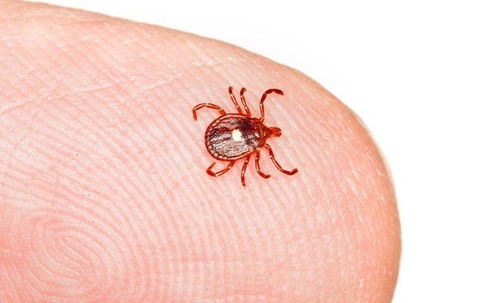With near-perfect weather year-round, Phoenix residents spend a lot of time outdoors. Fresh air and sunshine are an open invitation to relax and play; it is also an open invitation for ticks to hitch a ride onto and into your property. A carefree day of fun outside may result in a sneaky traveler attaching itself to your body and entering your home.
Description Of Common Ticks In Phoenix
Ticks are small little arachnids that live primarily outdoors; they are parasitic pests that feed on the blood of people and animals. Ticks are classified into two categories: soft ticks and hard ticks. Soft ticks typically feed on bats and birds while hard ticks feed on humans, pets, and nuisance wildlife. While most of a tick’s life is spent on an animal host, it is more than ready to transfer to a human host when the opportunity presents itself.
The main characteristics of ticks include the following:
- Oval-shaped bodies expand in size after a tick has feasted on blood.
- Nymphs have six legs, and adults have eight.
- They have no antennae or wings.
- They use special mouthparts to bite and bury their head into a host.
Phoenix is host to several varieties of ticks. Each species carries pathogens that cause over 65 different diseases. Some varieties common in the area are as follows:
- Lone Star Tick: Lone star ticks have a reddish-brown oval body that turns slate grey when engorging themselves. Females have a single whitish to silvery spot on their backs while the male has several inverted horseshoe-shaped whitish spots on their backs. Their bite can cause a circular rash and can carry a possibility of diseases such as tularemia, Heartland virus, Bourbon virus, and Southern tick-associated rash illness (which often resembles Lyme’s disease).
- American Dog Tick: American dog ticks are brown with whitish to gray markings. Their bite can cause itching, fever, and, in some cases, tick paralysis. A rash near the tick bite is a primary symptom of tularemia and Rocky Mountain spotted fever.
- Deer Tick (Blacklegged Ticks): Males are mostly black or dark brown. The females are slightly larger than the males with a reddish-orange coloration on the lower half and black on top. It is named for its black legs. The disease primarily carried by the deer tick is Lyme disease.
Reducing The Tick Population On Your Pheonix Property
Ticks are often found in high grass and yards with trees and shrubs. They prefer shady and moist areas like leaf litter and the edge of woods. Since ticks cannot fly or jump, they wait for their victim. They use their third and fourth legs to hold onto leaves and grass while keeping their first pair of legs outstretched - waiting to attach onto a host. When a host brushes up against the waiting tick, it quickly climbs aboard.
Keeping your lawn unattractive to ticks is best accomplished by mowing and trimming. Ticks prefer long grasses; therefore, removal of their favored locations is vital. Removing debris such as leaves and piles of grasses is also helpful. We recommend wood chip, gravel, or mulch barriers between grassy edges and your home. Since deer and mice are common transporters of ticks, it is wise to use prevention techniques to keep them off your property.
Consult The Experts At White Knight Pest Control
Nobody wants biting and disease-ridden ticks in their yard or home. White Knight Pest Control can work to eliminate ticks using an annual service plan with friendly pest control options. At White Knight Pest Control, we work with our clients to provide year-round protection from ticks. Reach out to us today to learn more about our tick control options!

